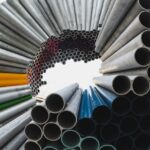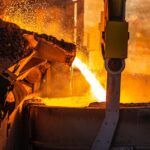Common Compensation Cases in the Steel Trade with China
Steel trading is a significant sector in the commodities trade. Steel is a vital raw material in manufacturing, and the value of the finished products can increase multiple times, making the accuracy of inquiries and purchases especially crucial.
1. Failure to Identify Suffix in Spot Purchases
Our client requested to purchase SPCC materials for shallow stamping, with relatively lenient requirements. The trading company had been sourcing SPCC downgraded materials for them. However, on one occasion of spot purchase, they failed to differentiate between SPCC S D and SPCC 4 D. SPCC S undergoes recrystallization annealing, whereas SPCC 4 is a partially annealed hard material suitable only for simple bending and fastening.
Despite mistakenly buying SPCC 4 materials, fortunately, we discovered the error before delivery and avoided severe losses.
Comment: After cold-rolling and hardening, SPCC can yield three different products with distinct applications that cannot be mixed. The price difference should not lead to hasty decisions.
2. Weight Mismatch in Package Delivery
One of our clients purchased electro-galvanized DC05+ZE grade deep-drawing materials in the specification of 0.6*1500mm and requested Chinese traders to cut them into 2500mm-long packages for delivery. Additionally, due to their equipment’s load capacity, they specified that each package’s weight should not exceed 3 tons.
The Chinese traders complied with the request, resulting in packages with a thickness of only about 10cm, which lacked overall rigidity. This caused significant friction marks and bending during transportation, rendering all the delivered products unusable and causing losses to our client.
Comment: Procuring parties should not only be knowledgeable about materials but also understand the risks associated with storage and transportation.
3. Material Cracking Due to Mistaken Purchase of High-Strength Steel Grade
Our client purchased HC700/980CP ultra-high-strength steel. As this steel type was scarce in spot availability, the HC700/980DP grade was more abundant. After comparing the mechanical properties based on the quality assurance certificate, the purchasing party concluded that they were similar and decided to buy 17 tons of HC700/980DP. However, during their user’s application, all these steel materials cracked during hole expansion and flanging, leading to compensation claims against the purchaser.
Comment: Relying solely on mechanical properties for purchase decisions is a common mistake. Such comparisons are only meaningful when dealing with similar steel types. In this case, the CP suffix indicates dual-phase steel, which excels in flanging/expansion performance compared to DP. Using DP steel for CP applications inevitably leads to cracking.
4. Loss Due to Different Standard Numbers in Spot Purchases
Our client initially provided B Steel Plant’s SPCC to the end-user for stamping purposes. To cut costs, they switched to using the same grade from L Steel Plant. However, during the procurement process, our client failed to recognize the standards, resulting in the purchase of products conforming to the JIS Japanese standard. Under this standard, mechanical properties were not guaranteed, and ultimately, 20 tons of materials cracked during stamping.
Comment: This is a typical case that occurs annually. Some SPCC grades might have multiple standards of use, but they are not necessarily equivalent. For example, SPCC, CR1, etc., might have varying requirements for mechanical properties or steel grades under different standards. Some Chinese traders may take advantage of this to mislead buyers.







